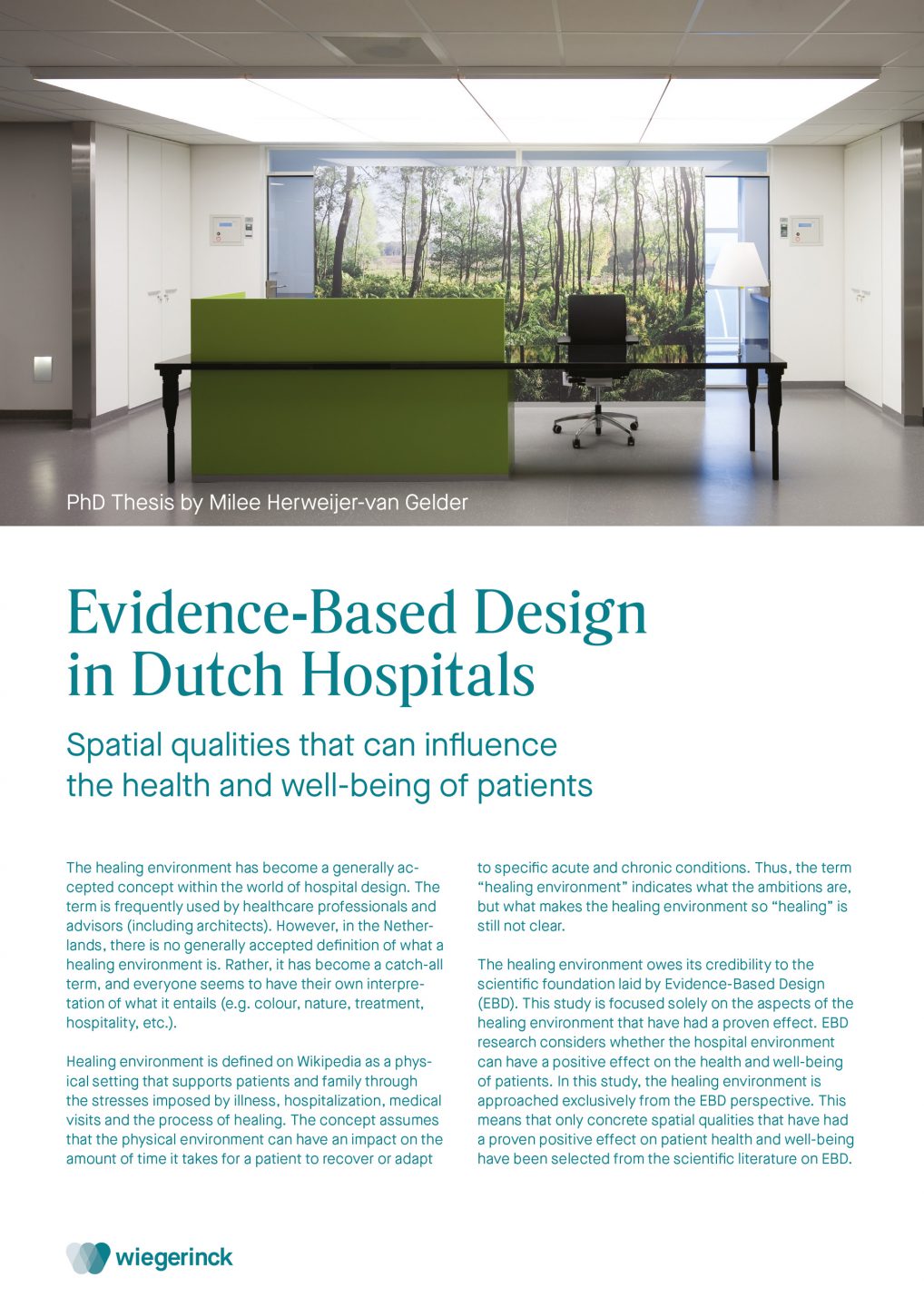Healing Environment & Evidence-Based Design
April 2016
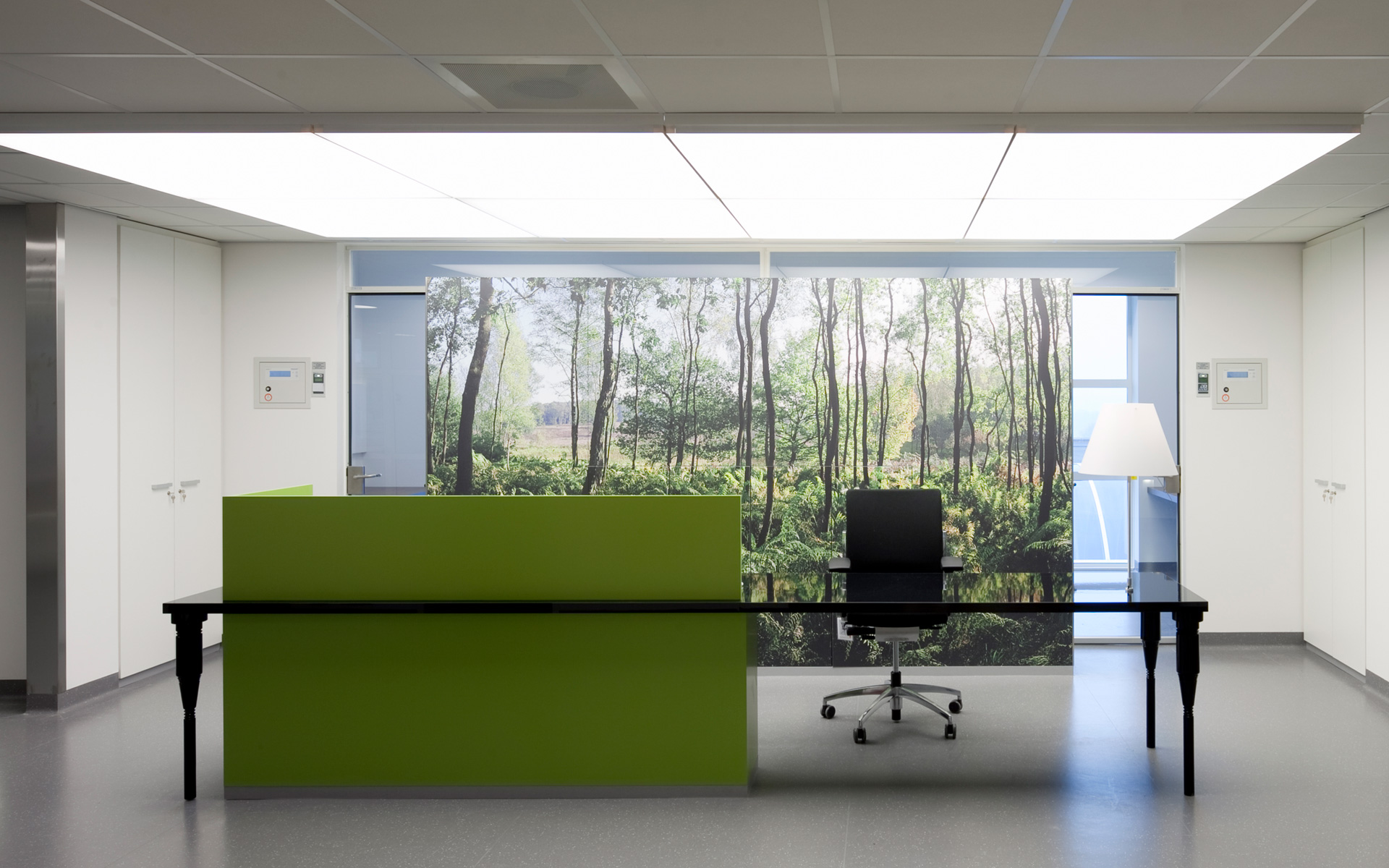

How spatial quality
promotes recovery
The healing environment. It is a term often used by healthcare professionals, consultants and architects. And yet, there is no generally accepted definition of it. Instead, it has become a kind of catch-all term that everyone seems to interpret in their own way. But what exactly is a healing environment? Why is it so important and useful? And how can you make it an integral part of a design for a department or an entire hospital?
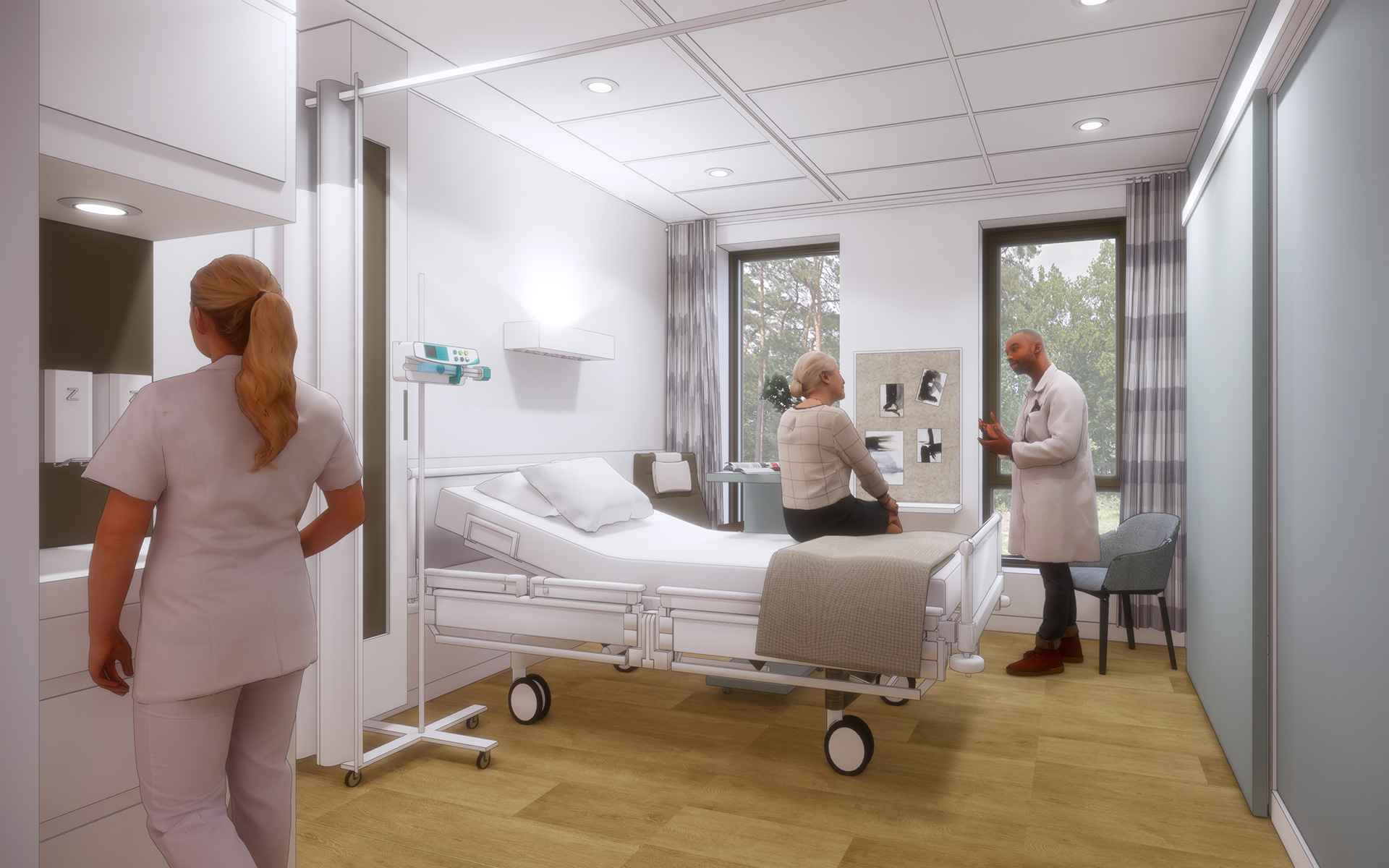
Single bed rooms at the Tergooi Hospital in Hilversum
Thesis
Dr. Milee Herweijer-van Gelder, architect at Wiegerinck and graduate of the Delft University of Technology, addressed this subject in her doctoral thesis, “Evidence-Based Design in Dutch Hospitals”.
The notion of the healing environment is rooted in the field of Evidence-Based Design (EBD). EBD involves complex and detailed research into the relationship between spatial aspects and the health and well-being of patients. For her thesis, Herweijer conducted a thorough investigation of the existing literature and extensive field research in a number of Dutch hospitals.
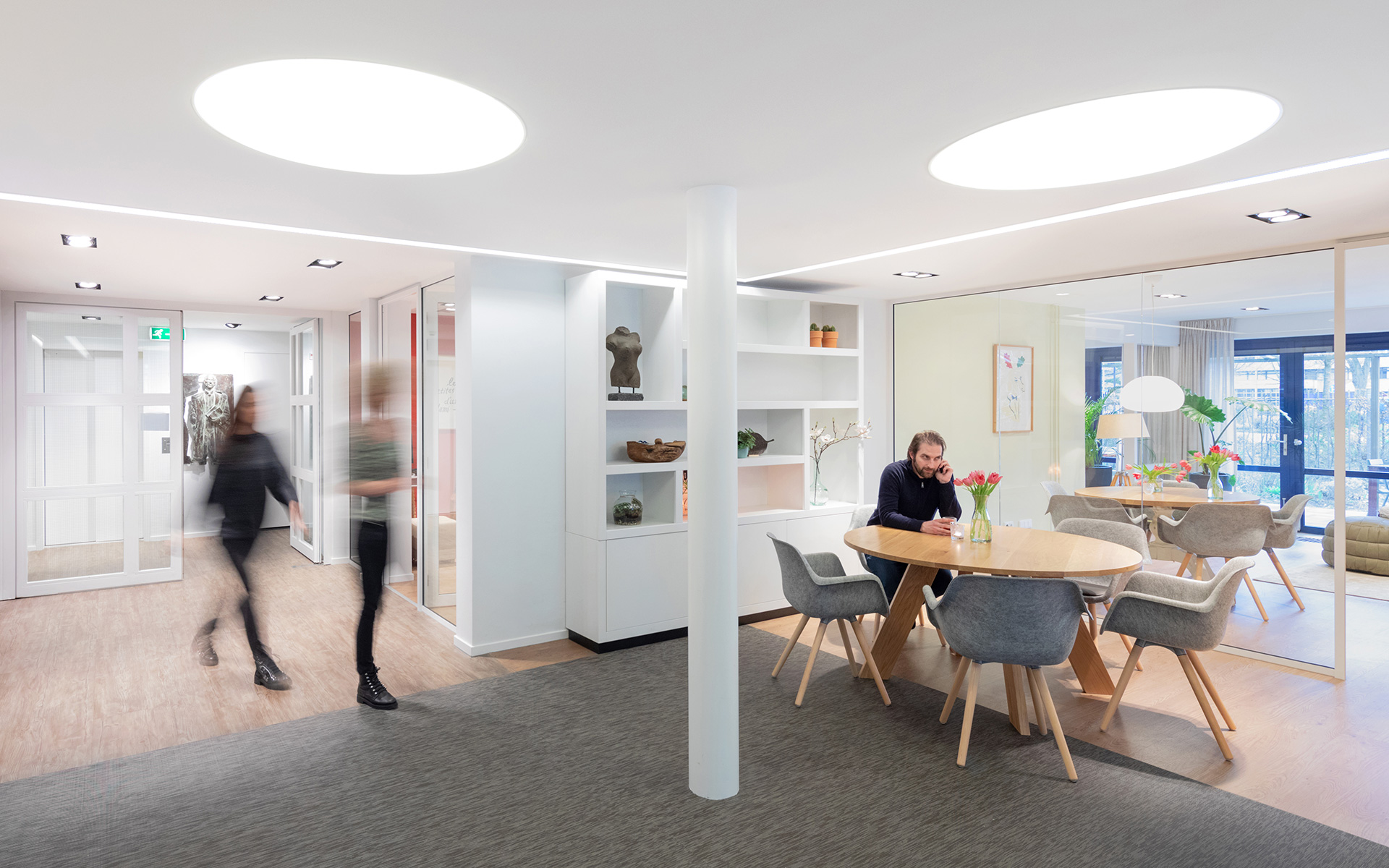
Sense of safety: Het Gasthuis reception area at the Antoni van Leeuwenhoek Hospital in Amsterdam
Health, well-being and care
Improving patient health is the cornerstone of EBD research. The basic principle of EBD is that a patient should not become sicker during his or her hospital stay from illnesses that were not present at the time of admission. Thus, preventing hospital infections is very important, as is reducing patient stress—because stress slows down recovery. One solution that achieves both, for example, is the single-patient room. Not only are single rooms very effective for preventing infection, they also greatly reduce stress by offering, among other things, privacy to patients.
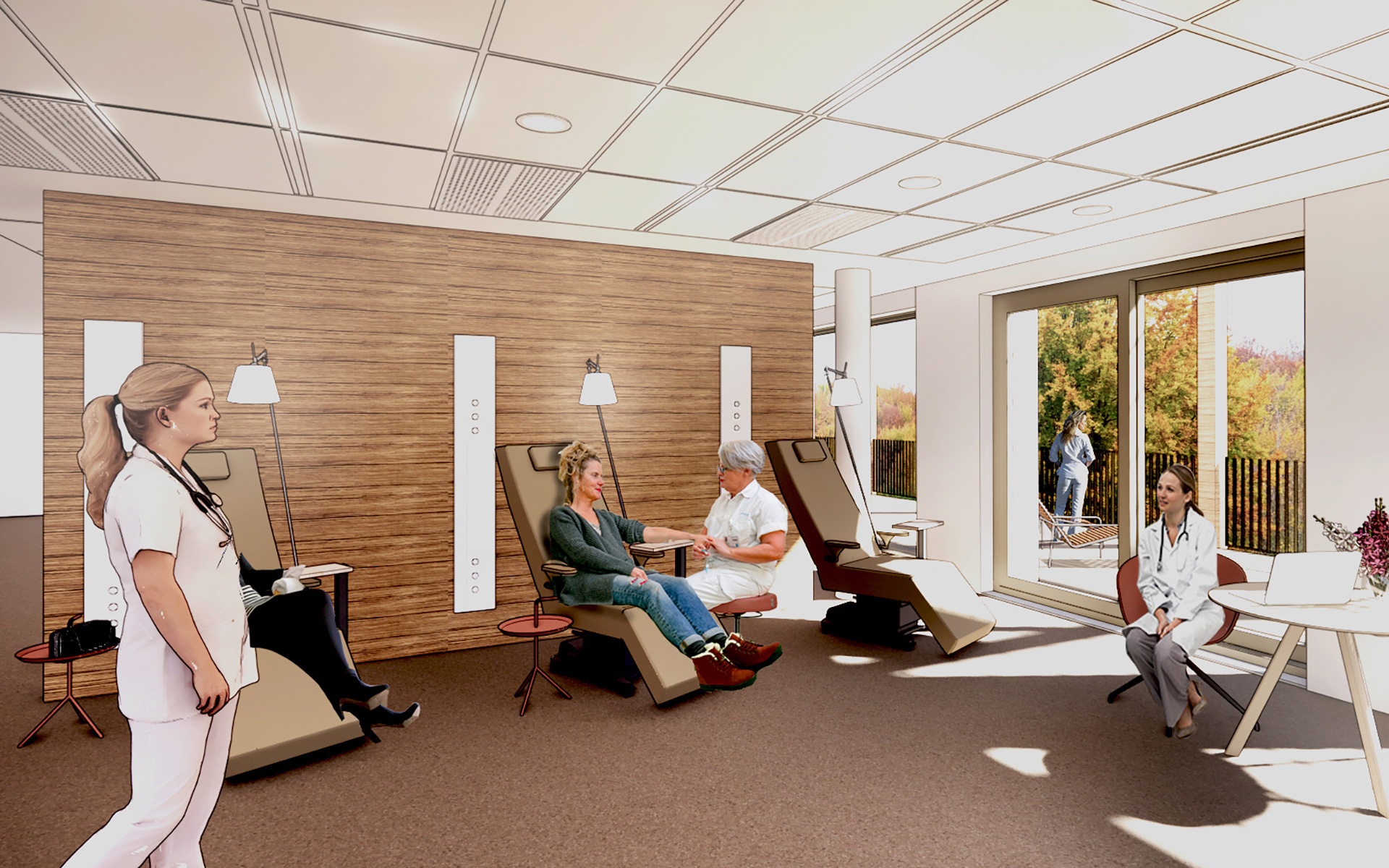
Social support: Oncology department at the Tergooi Hospital in Hilversum
Reducing medical errors
The risk of medical errors is also substantially reduced when environmental factors are included in the design. Acoustics are important because too much noise can adversely affect the concentration of doctors and staff. The incidence of light and colour can also have a significant impact. Another highly effective example is the acuity adaptable single room, which is known to reduce the number of medical errors by almost 70%.
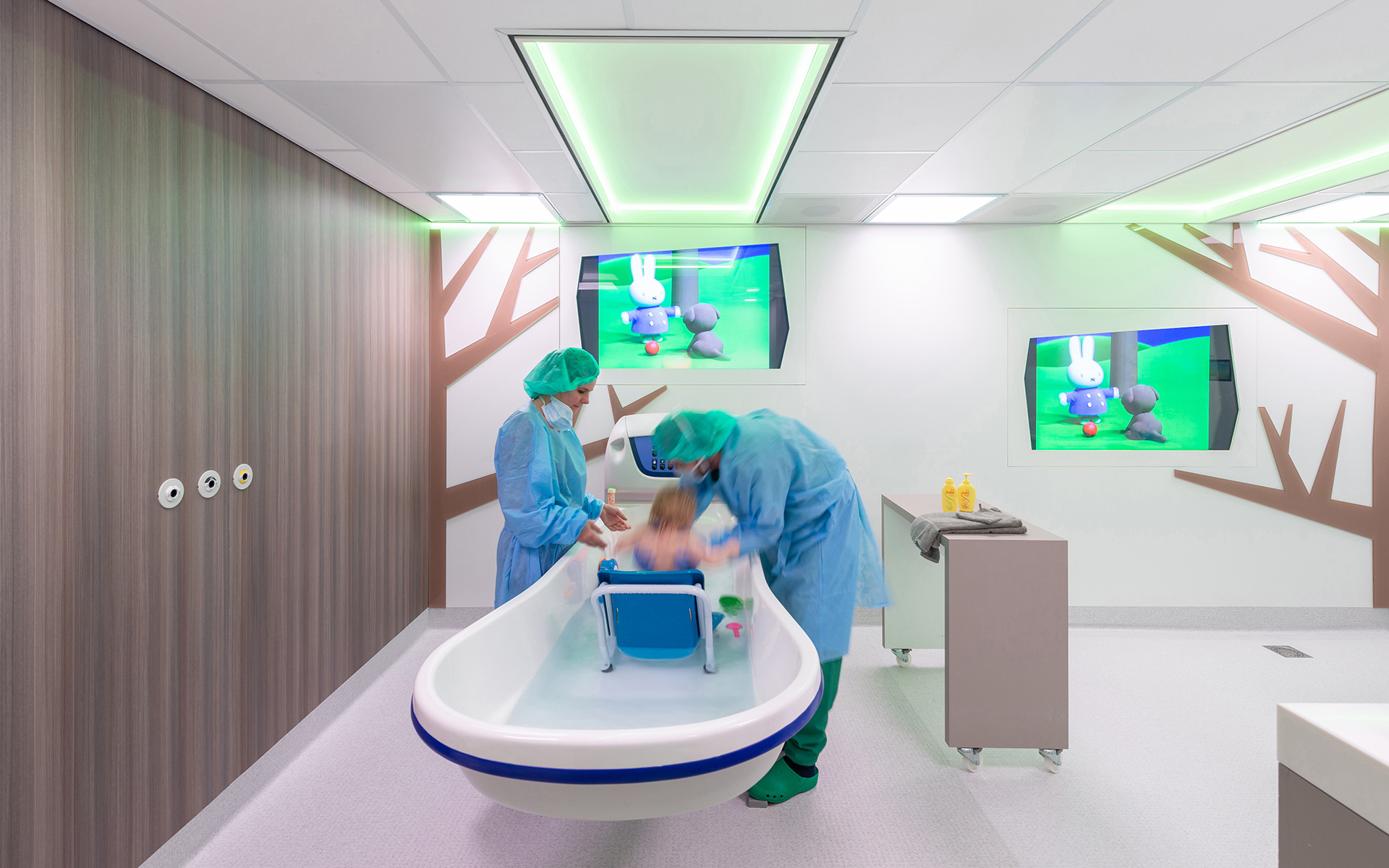
Positive distraction: Child-friendly dressing change room at the Maasstad Hospital Burn Centre in Rotterdam
Responding to basic needs
People are extra vulnerable when they are sick. In many cases, they are unable to meet their most basic needs by themselves, and this causes stress. Stress can have an adverse effect on recovery, blood pressure, heart rate, length of bedrest, sleep and the need for pain medication. Getting enough sleep, having a view of nursing staff, safe access routes, support from family, sufficient space, privacy—these are all factors that can relieve stress and help speed up recovery. There are many physical-spatial solutions that can help reduce patient stress and anxiety, and they can be incorporated into any design, be it for an entire hospital, a renovation or a new department.
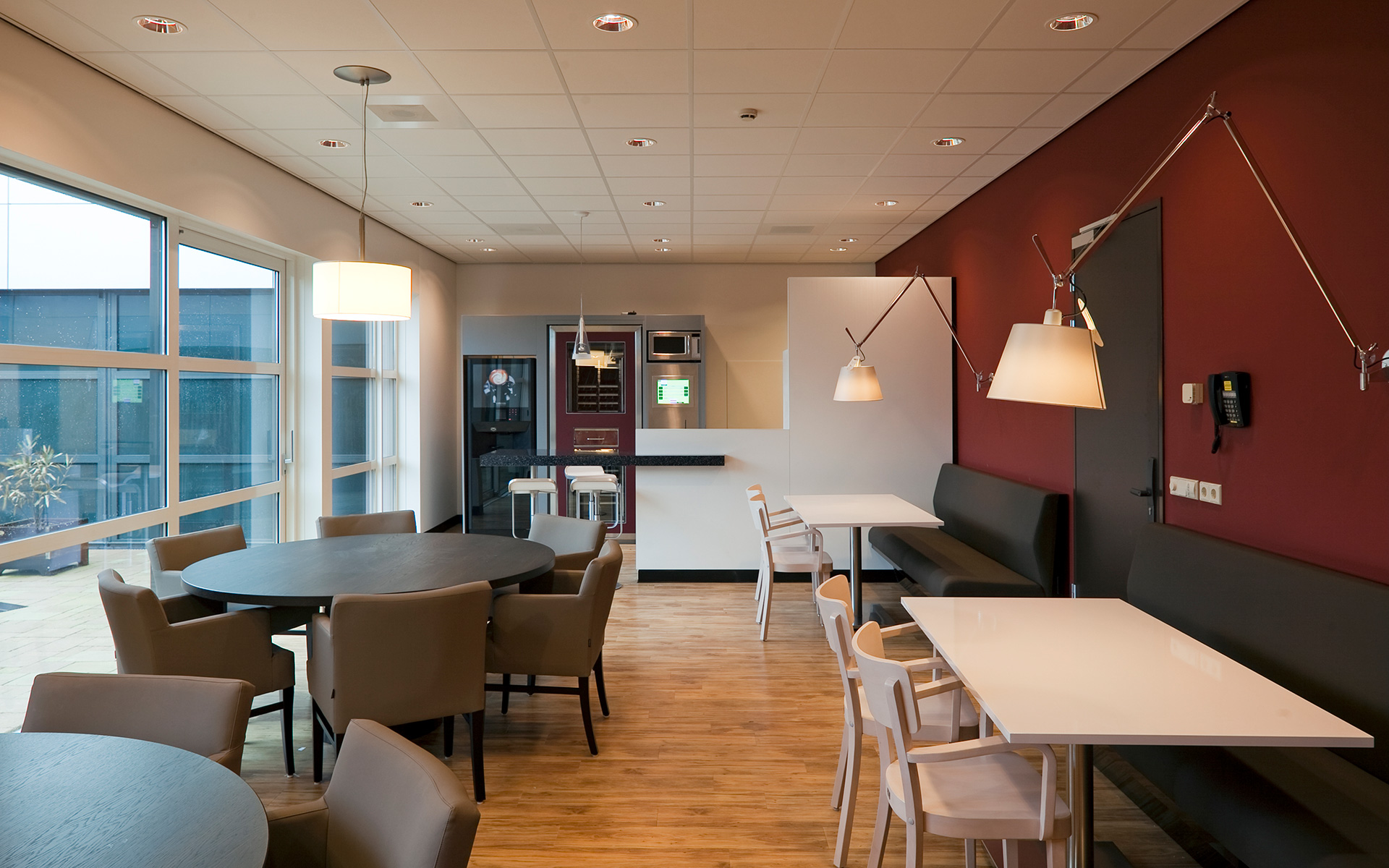
Reducing stress: Central break room in the UMCU Intensive Care Unit where staff can meet and relax during their long shifts
Field research
In a number of case studies, Herweijer also analysed various Dutch hospitals, five of which were in the design and construction phase. Based on her analysis, it is clear that we can formulate valuable knowledge from EBD to establish functional requirements that can be incorporated into a programme of requirements.
Drawing from our in-depth EBD insights, Wiegerinck can—together with you—realise positive effects in the healthcare environment. These effects are not only desirable but also necessary. Herweijer’s field research shows that there is still a lot we don’t know, and thus, what we do know is rarely applied. In most hospitals, for example, there are still many rooms with little to no daylight where doctors work and patients stay. More than half of the hospitals surveyed have multi-person patient rooms with shared sanitary facilities. In almost all cases, day treatments offer hardly any privacy, positive distractions or opportunities for social support for patients.
A world to gain
Above all, Herweijer’s research demonstrates that EBD can go hand in hand with architectural quality. There is so much to be gained from designing and renovating hospitals or departments—for the patients, who recover more quickly in hospital environments designed to make people as comfortable as possible, as well as for the nursing staff, who work more efficiently, effectively and happily in an optimally designed and arranged environment.
Anyone seriously interested in the healing environment concept is encouraged to take a closer look at Wiegerinck’s work. Would you like to know more about how you can transform your hospital or department into a healing environment? Are you interested in speaking with Milee Herweijer directly? Call us to set up an appointment!


